The center of Knox County's population might surprise you. Hint: It's not Cedar Bluff
Over the past decade, the center of Knox County's population has shifted west, according to a Knoxville-Knox County Planning study released in November.
The population has been shifting slightly west since 1980.
That's consistent with a nearly 200-year-old national trend on a far greater scale, as the U.S.'s center of population also has shifted west, from Washington, D.C., in 1800, to Wright County, Missouri, in 2020. The new center of the U.S. is about 470 miles west of Knoxville.
Here's what this shift means inside Knox County.
How Knox County's population has shifted
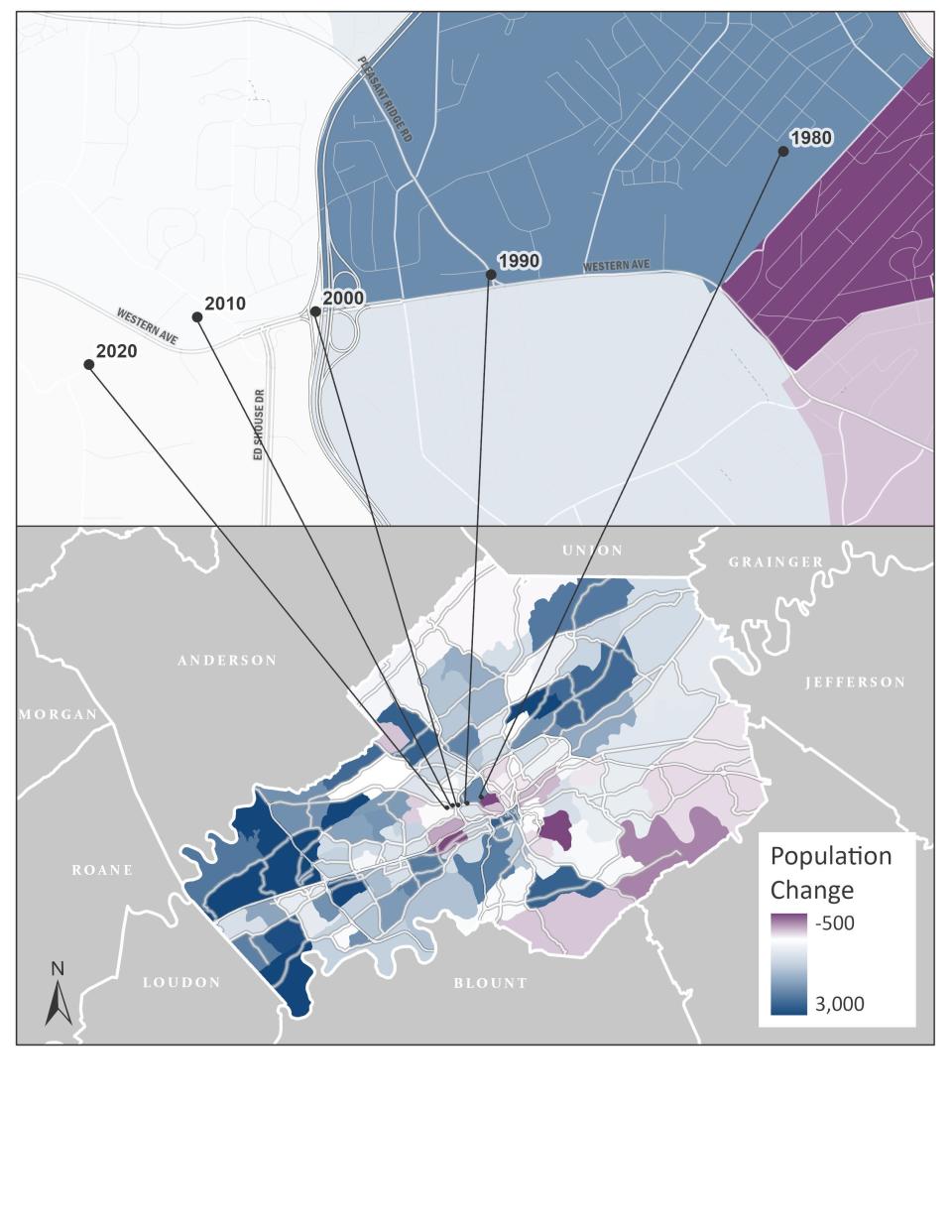
The 2020 center of Knox County's population of 478,971, according to U.S. Census Bureau data, was near the intersection of Hinton Drive and Third Creek Road near Victor Ashe Park. That's about half a mile southwest of 2010's center of population.
The previous centers were:
2000: Western Avenue and Interstate 640
1990: Western Avenue and Pleasant Ridge Road
1980: Sherman Street and Louisiana Avenue, South of Lonsdale Elementary School
West Knox County saw gains in population and business licenses
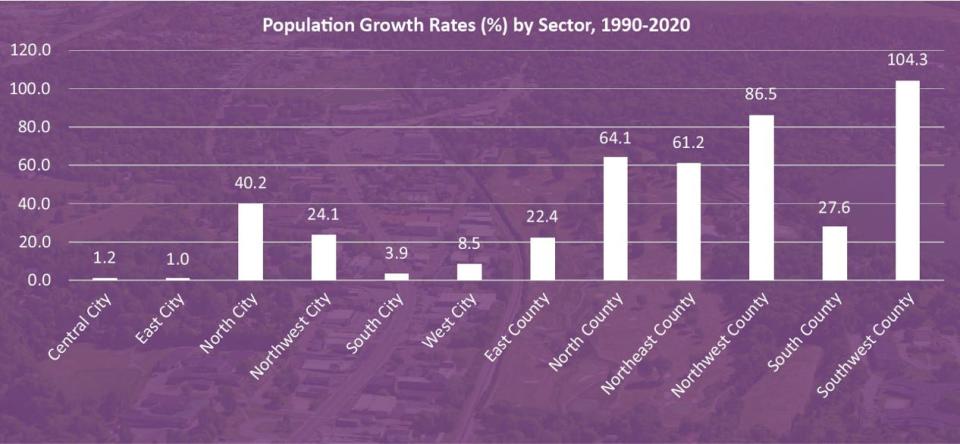
More in economic development:Thousands weighed in on what they'd like Knox County to look like. Here are the trends
From 2011 to 2020, the commission's report showed the most development and population increases happened in the northwest and southwest portions of the county.
Those two areas combined accounted for nearly 50% of building permits issued from 2011 to 2020. The east and southeast sectors combined for just under 7% of building permits.
"Northwest county was the fastest-growing sector of the past 10 years and consistently top two in the past 30 years, which is not surprising to locals as development in this sector often grabs headlines," according to the report. "Southwest county has also led with considerable growth in the past 30 years, contributing to the westward path that the Knox County center of population has taken."
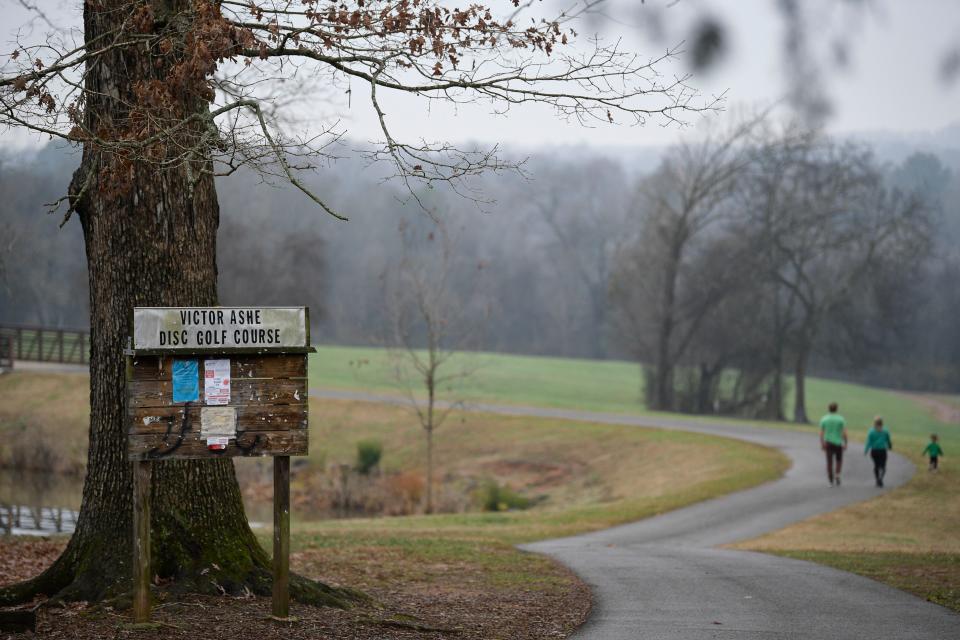
While the population grew all across the county, the southwest corner saw a 104.3% increase and the northwest corner grew 86.5% from 1990 to 2020, according to the report. Eastern Knox County's population grew by 22.4%.
Areas like Hardin Valley, Solway and Concord have especially seen a lot of population growth, according to the report.
Knox County pattern of growth moves away from East Knox County
Knox County's eastern sectors - east within the city, eastern section of the county and the northeast part of the county - saw less development in the last decade than in previous decades. And the county sectors outside of the city limits showed more growth, with the exception of the Central City sector, which includes downtown.
Some neighborhoods experienced population decreases, including Strawberry Plains, Carter and Neubert Springs.
Overall by region, the southeast county and north city areas have seen the most significant population decreases.
The population decreases in certain areas can impact the economy and where businesses thrive. If businesses move, they take employment opportunities with them, as well as the goods and services they provide, according to the report.
This can contribute to disinvestment and grocery store deserts.
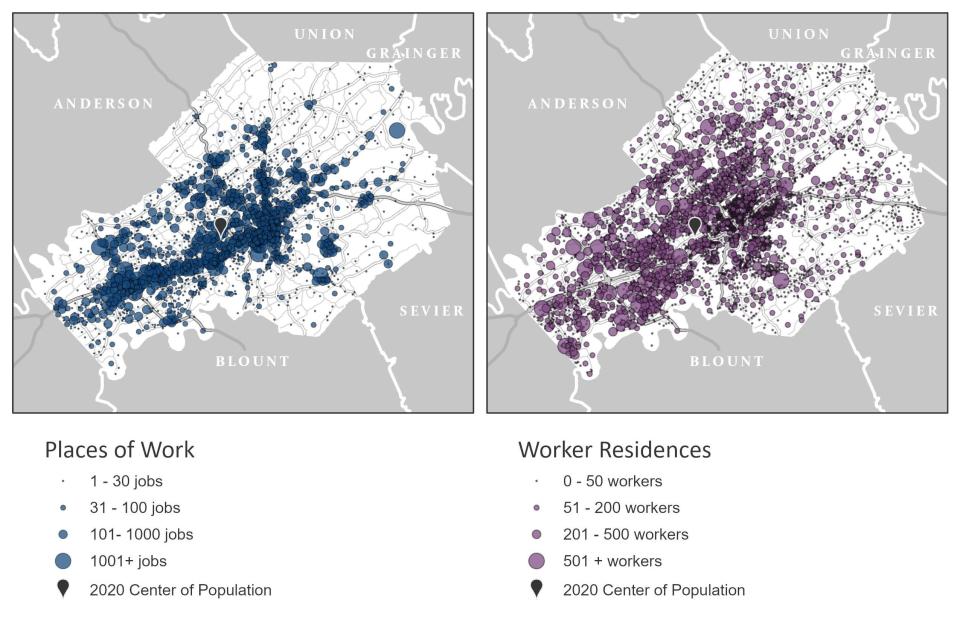
Creating an unsustainable living situation
The increase in businesses and population in West Knox County can lead to challenges for those neighborhoods, too.
"Since the 1980s, the center of population has reflected outward movement from the urban center to new, single-family homes in the suburbs," according to the report. "Housing development has been concentrated in greenfields, formerly agricultural or undeveloped areas, as Knox County residents have moved further out into the county to follow the supply of new housing."
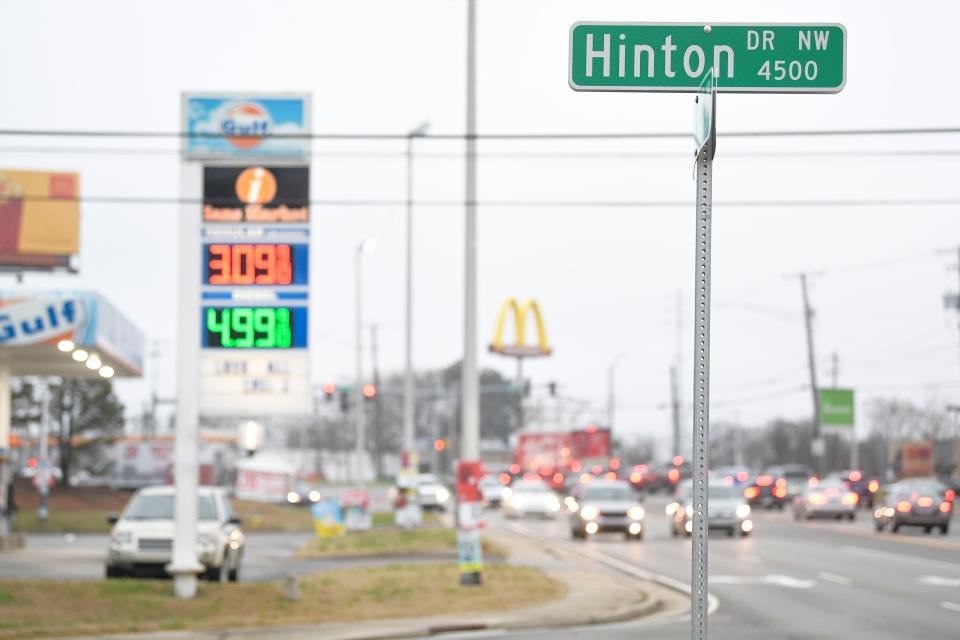
The demand for housing has increased, which can take years to meet. Knox County already is challenged to meet the demand for new housing.
That shift also creates a need for expanded infrastructure to provide services and utilities to those areas that were previously more rural.
Existing services, like schools and emergency services, can also become strained by population increase, according to the report, which in turn requires more significant investments by the local government for expansion.
Why are some parts of Knox County not as popular?
It's clear the northern segment of the county is the more popular place to develop, but why does the east see less development?
There could be a number of contributing factors, such as topography and existing infrastructure, according to Knoxville-Knox County Planning staffers.
Historically, southern parts of the county have had less transportation access and are less connected to utilities. It also has land that is more hilly and difficult to build on, making investments more expensive in those areas. Developments are more likely to be proposed in areas where access to utilities is readily available, according to staff.
Northeast county investments:Mystery manufacturer would invest $150 million in Knox County – if the deal gets done
East Knox County is also primarily farmland and there has been more of a push to preserve family farms, according the planning staff. Additionally, the staff said residents in that area are generally more apposed to development.
"Our staff could come up with possible contributing factors all day because there are no clear-cut answers," a spokesperson told Knox News in an email. "But it's possible that each one of these factors has been the obstacle that prevented a development from taking place."
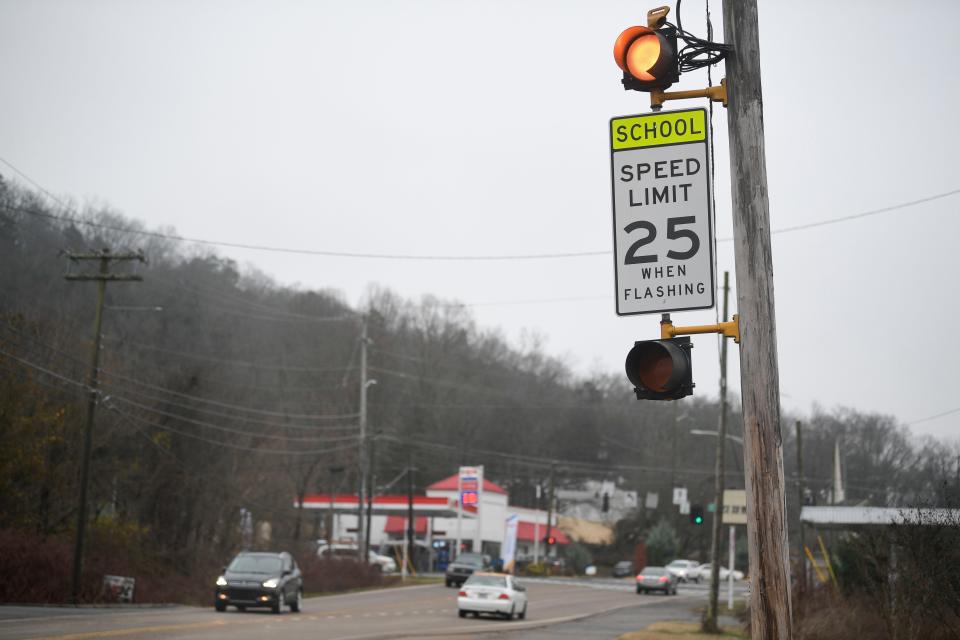
Where does the population shift mean for Knox County?
In the short and midterm, Knoxville Knox County Planning executive director Jeff Welch said the westward shift is not too concerning.
Since this this trend has been consistent for the last 40 years, Welch said he thinks the infrastructure is in place to sustain this type of development.
"Long term with hopefully better public and private cooperation in infrastructure growth can be steered to other parts of the county," Welch told Knox News in an email. "Also the availability and affordability of land will naturally turn growth to other parts of Knox County."
As for combatting food deserts and strains on existing infrastructure, Welch said Advance Knox will provide an important blueprint to make sure the county grows in a fiscally responsible way.
Advance Knox is a process that will shape the county's growth plan - how and where development is encouraged and facilitated.
Advance Knox:Knox County isn't ready for 79,000 new residents: 'We will not maintain the status quo'
"That should encourage and direct development where there is adequate infrastructure," Welch said.
The initiative's finalized growth plan is expected to be completed and adopted by May.
Silas Sloan covers growth and development in East Tennessee for Knox News. He can be reached at silas.sloan@knoxnews.com. You can follow his work on Twitter @silasloan, or on Instagram @knox.growth. and sign up for the free, weekly Urban Knoxville newsletter. Unlock premium perks and support strong local journalism at knoxnews.com/subscribe.
This article originally appeared on Knoxville News Sentinel: Knox County, Tennessee, population moving west per census bureau data
